Genus Camponotus subgenus Myrmamblys
| The Ants of
Africa Genus Camponotus subgenus Myrmamblys |
|
| Genus Camponotus |
Subgenus definition - Forel (1912i: 90) - mostly unsculptured, shiny, alitrunk of worker moderately low and not medially waisted (étranglé); dimorphism (no intermediates) shown in head, always more or less truncate, including clypeus, antennal insertions well forward relative to frontal carinae. Major workers use the truncated head to block nest entrances in hollow stems and trunks of trees (Arnold 1924: 613).
![]() Forel's (1912i) subgenus
definition is on
Forel's (1912i) subgenus
definition is on ![]() . Santschi (1926c) gave a
further genus
definition, this is at
. Santschi (1926c) gave a
further genus
definition, this is at ![]() .
.
Key to species
| 1 | 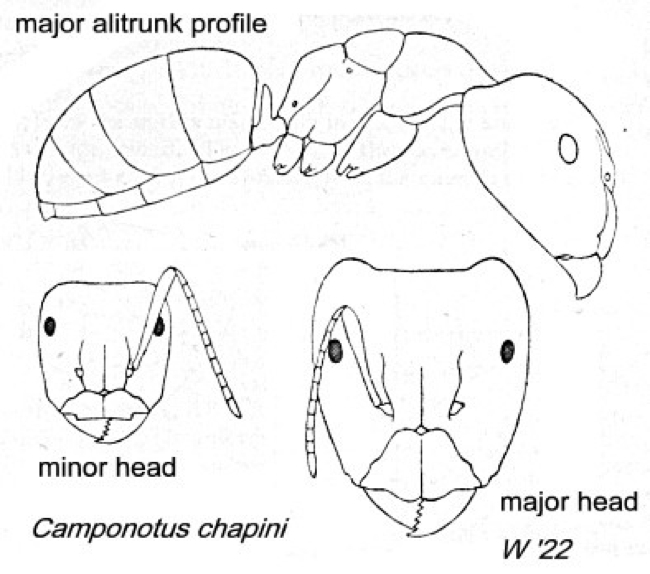 Petiole a very narrow
scale in profile; major 5.5-6.5 mm;
HW 2.2 mm HL 2.4 mm; dark brown appendages wholly yellow Petiole a very narrow
scale in profile; major 5.5-6.5 mm;
HW 2.2 mm HL 2.4 mm; dark brown appendages wholly yellow |
. |
| . | 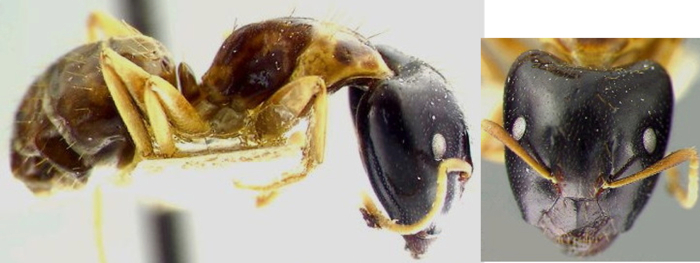 Major Major |
. |
| . | 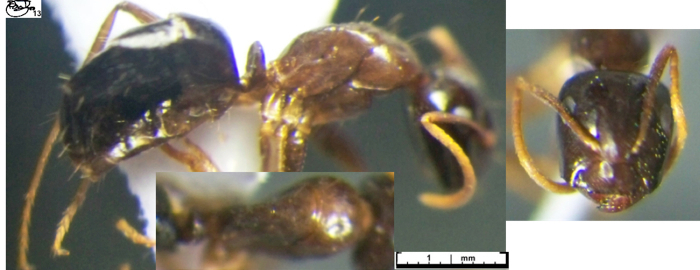 Minor Minor |
West Africa & Congo Basin into Sudan southern forests - chapini |
| -- | Petiole a thicker scale | 2 |
| 2 | 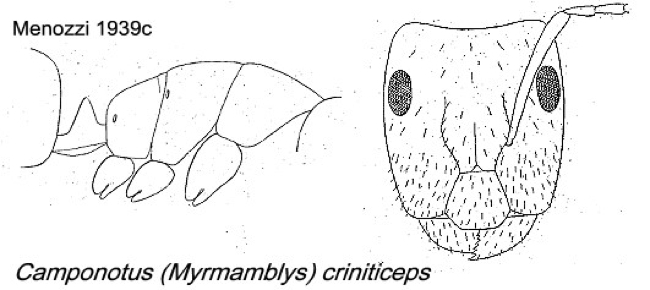 Petiole with
triangular profile; major TL 6.8-7.3 mm; head
relatively long and narrow, with sides only shallowly convex; mostly
bright testaceous yellow, with head and gaster brown; head opaque rest
shiny Petiole with
triangular profile; major TL 6.8-7.3 mm; head
relatively long and narrow, with sides only shallowly convex; mostly
bright testaceous yellow, with head and gaster brown; head opaque rest
shiny |
Ethiopia - criniticeps |
| -- | Petiole with convex anterior face and flat posterior | 3 |
| 3 | 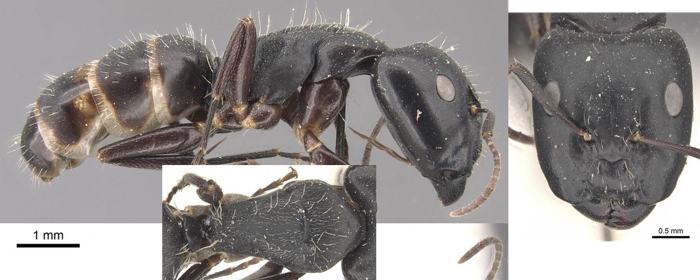 Major TL 7.7-9.3 mm; HW 2.3 mm
HL 2.8 mm; black, funiculus and legs red-brown, posterior of gaster
segments with a smoky yellow-white band Major TL 7.7-9.3 mm; HW 2.3 mm
HL 2.8 mm; black, funiculus and legs red-brown, posterior of gaster
segments with a smoky yellow-white band
|
. |
| . | 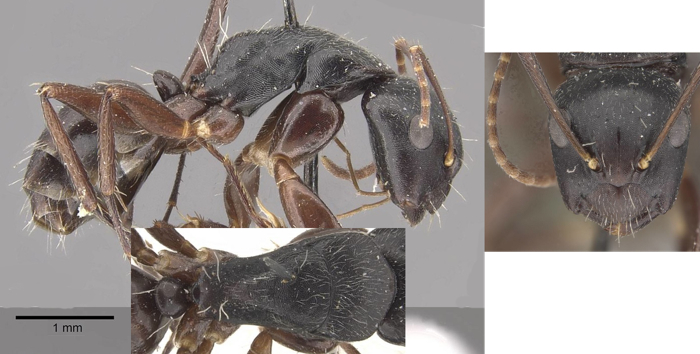 Minor TL 4.3-6.0 mm
Minor TL 4.3-6.0 mm |
Cameroun - buchholzi |
| -- | 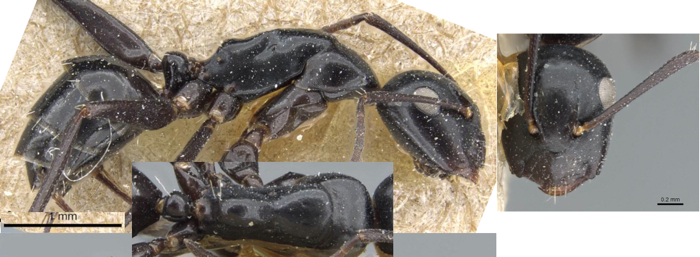 Minor only - TL 3.5-4.7 mm; black with
appendages mostly testaceous Minor only - TL 3.5-4.7 mm; black with
appendages mostly testaceous |
South Africa - klugii |
| Genus page |
© 2007, 2013, 2014, 2018 - Brian Taylor CBiol FRSB FRES 11, Grazingfield, Wilford, Nottingham, NG11 7FN, U.K. |
href="myrmamblys.htm"